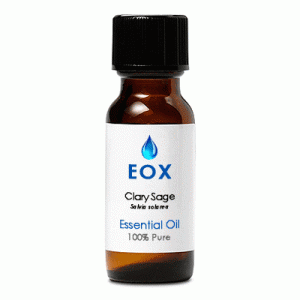|
Characteristics:
A colorless or pale yellowy-green liquid with a sweet, nutty-herbaceous scent. It blends well
with juniper, lavender, coriander, cardamom seed, geranium, sandalwood, cedarwood, pine, labdanum,
jasmine, frankincense, bergamot and other citrus oils.
Principal Constituents: These are naturally occuring in the essential oil.
- linalyl acetate
- linalol
- pinene
- myrcene
- phellandrene
General Actions:    Open Symbols Key
Open Symbols Key
Anticonvulsive, antidepressant, anitphlogistic, antispasmodic, aphrodisiac, astringent,
carminative, cicatrizant, deodorant, digestive, emmenagogue, euphoric, hypotensive,
regulator (of seborrhea), sedative, stomachic, tonic, uterine.
Safety:
 
Non-toxic, non-irritant, nonsensitizing. Avoid during pregnancy. Do not use clary sage while drinking
alcohol; it can produce a narcotic effect and exaggerate drunkeness.
Primary Therapy Agent:
Asthma, sore throat, throat infections, cramp, gastric spasm, dysmenorrhea, labor pain, childbirth aid,
nervous exhaustion, fatigue, nervous tension, stress-related conditions.
Secondary Therapy Agent:
Acne, baldness and hair care, boils, abscesses, blisters, dandruff, dermatitis, greasy or oily skin/scalp,
irritated and inflamed skin, mouth and gum infections, wrinkles, mature skin, aches and pains, coughs,
laryngitis, hoarseness, tonsillitis, whooping cough, colic, indigestion, flatulence, amenorrhea, frigidity,
leucorrhea, depression, headache, migraine.
Important Note: The information on Florapathics.com is
only provided for educational purposes, and further research should be done on each essential oil to be assured
of its proper usage for each individual. Aromatherapy is not meant to be a replacement for care under a qualified
health professional, but should be considered a complimentary modality.
|










